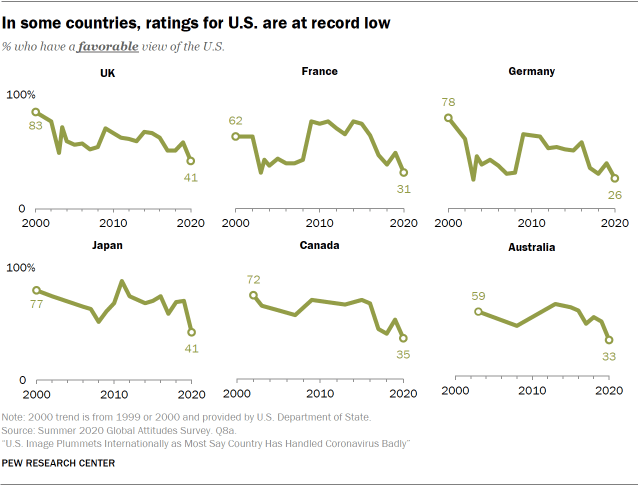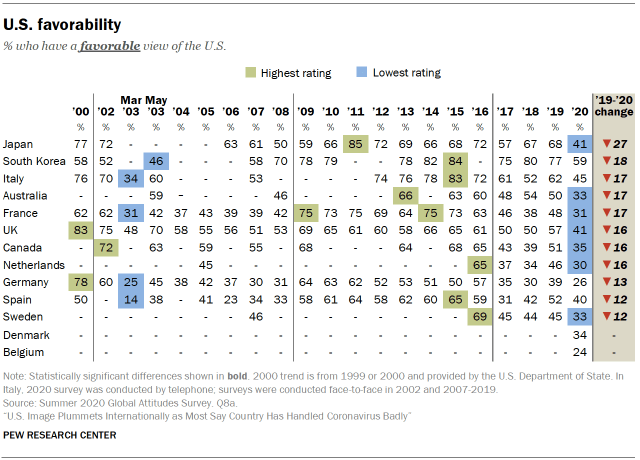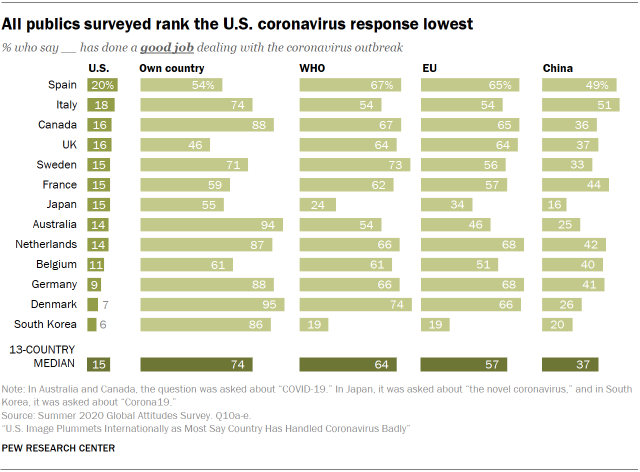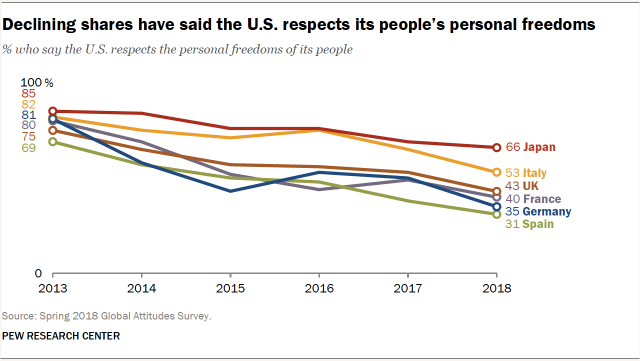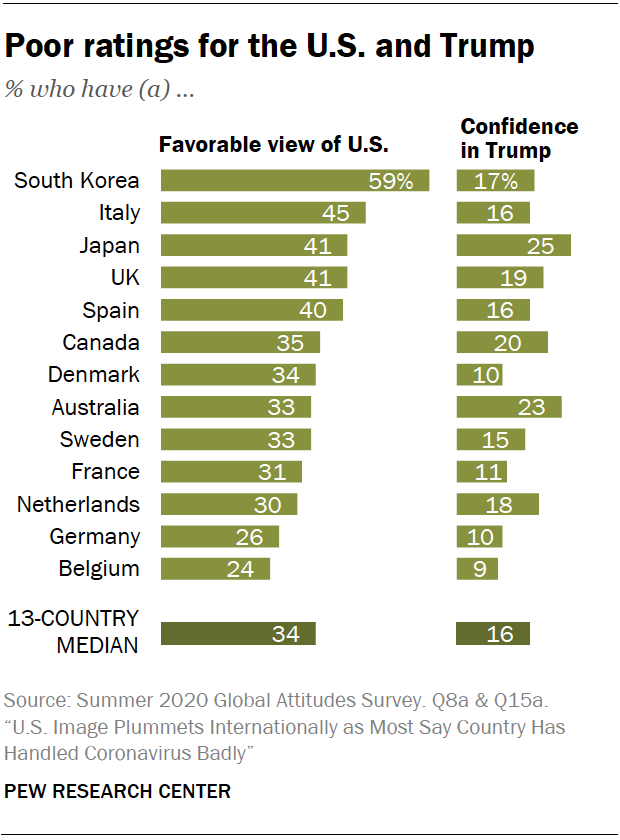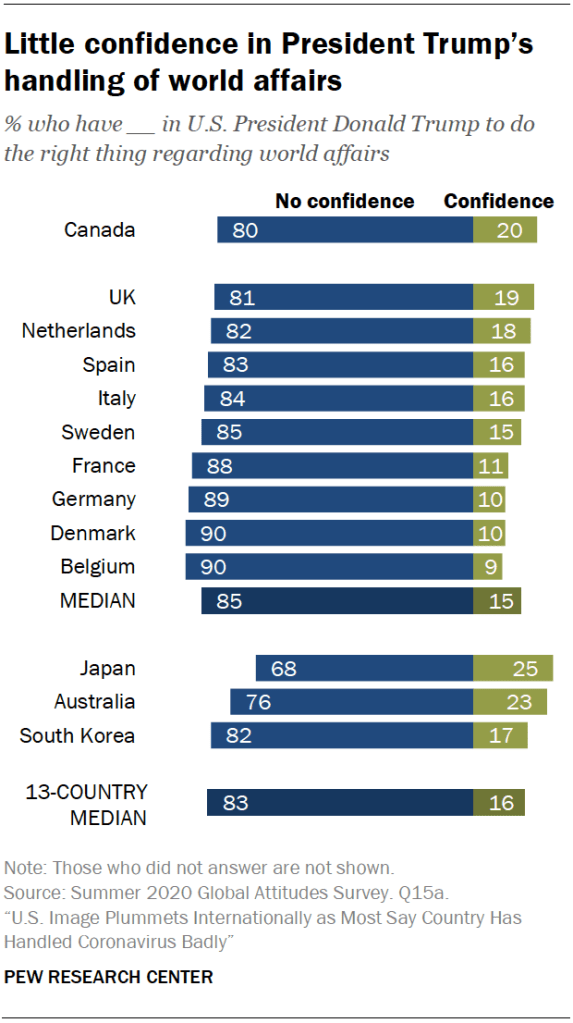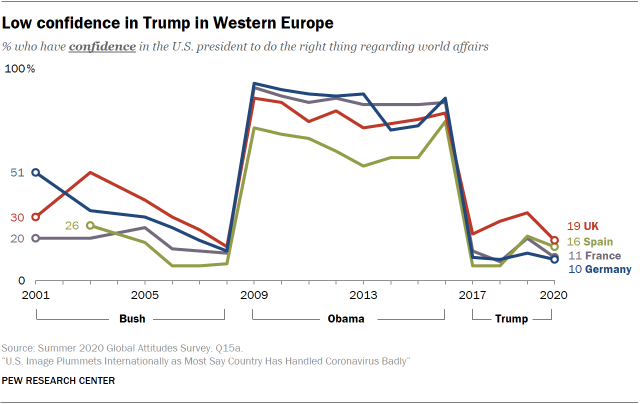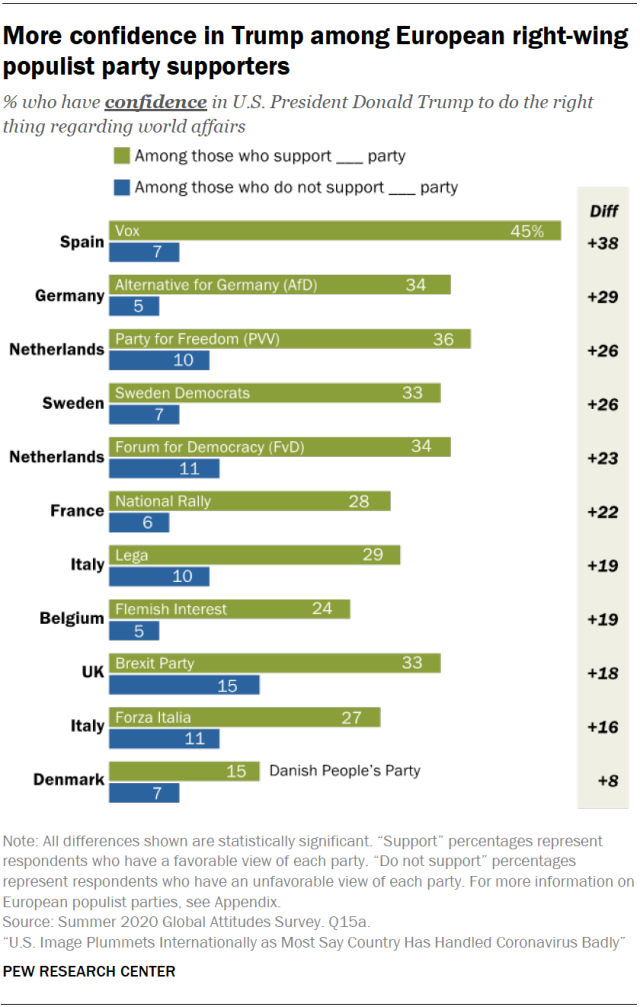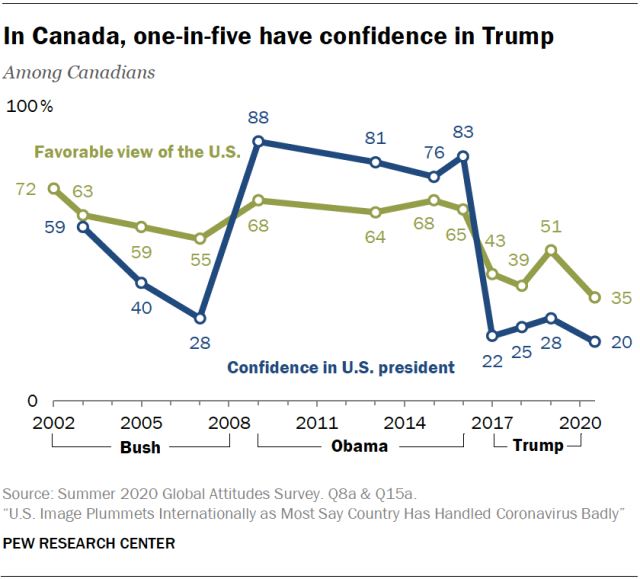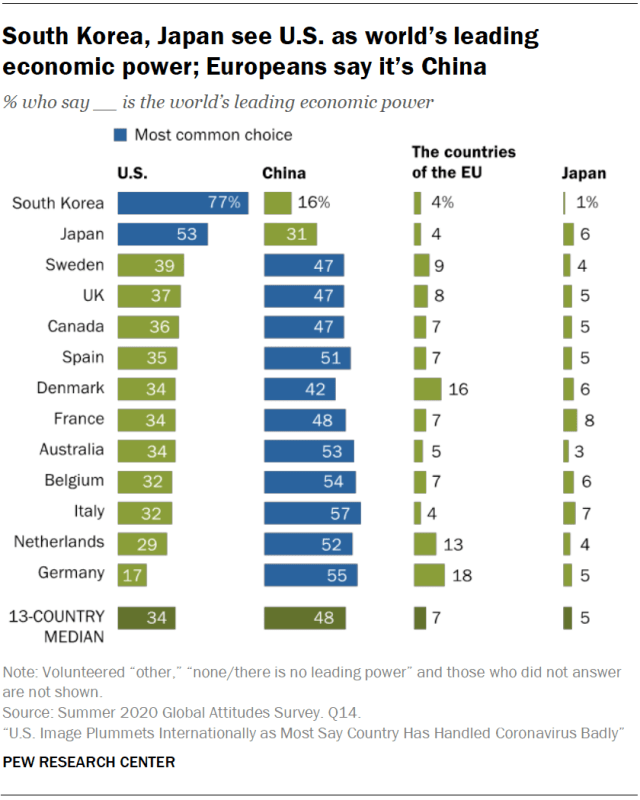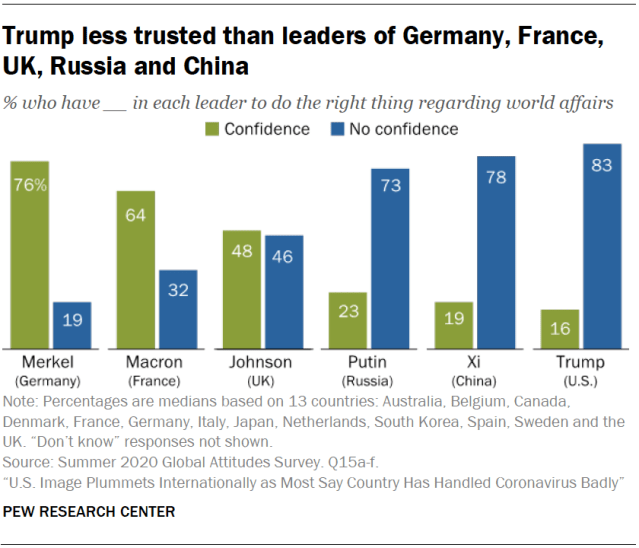A poll in 13 countries indicates that the rating of the United States and the confidence in its president are approaching the bottom; and it could get worse.
For the past two decades, the Pew Research Center has been surveying a range of democratic countries, including Canada, on their perceptions of the United States and their confidence in the president’s international leadership, among other topics. This year’s results indicate a profound deterioration in the country’s international image, which significantly reduces its ability to exert influence over its key allies and the world.
This is important in the first place because the international leadership of the United States has been at the heart of the world order since World War II and there is reason to doubt that the progress made during this period on a global scale would have could be without this leadership. For Canada, whose proximity to the United States is an inescapable fact of its foreign policy, the decline of American influence entails the need to thoroughly rethink its relations with the world.
More immediately, as part of the American presidential campaign, Donald Trump proclaims from the rooftops that his presidency has restored the world’s respect for the United States. What about the facts? Rather, the opposite has happened. We will of course remember the episode where the members of the United Nations General Assembly faked the face of the American president. No, they weren’t laughing with him, they laughed at him. The data collected by the Pew Center confirms a trend that we already knew and that was amplified by the catastrophic response of the Trump administration to the coronavirus pandemic and by the social tensions of recent months.
The image of the United States in decline
In the 2000s, the war in Iraq had severely damaged the image of the United States in the world. After a decade of recovery, it was the election of Donald Trump that once again tarnished this image.
Table Of Contents
- 1 1. Evolution of the perception of the United States in six countries
- 2 2. Perception of the United States in 13 democratic countries, 2000-2020
- 3 3. United States’ response to coronavirus deemed worst of all
- 4 4. Perceptions of respect for individual freedoms in the United States
- 5 5. Image of the United States and Confidence in Trump
- 6 6. Confidence in President Trump’s Management of Global Affairs
- 7 7. Confidence in the American President in Western Europe
- 8 8. Confidence in President Trump and Right-Wing Populism in Europe
- 9 9. Confidence in the American President in Canada
- 10 10. The economic leadership of the United States supplanted by China
- 11 11. Donald Trump, the dunce of the world leader class
1. Evolution of the perception of the United States in six countries
2. Perception of the United States in 13 democratic countries, 2000-2020
Part of this general trend has to do with the ideology of the two main American parties, as the Republican Party represents a downright marginal right-wing orientation in most other democratic countries. In the 2000s, the negative image was also linked to the unilateral intervention in Iraq. Today, in addition to the president’s poor image, world opinion is passing a very harsh judgment on the performance of the United States in the face of the COVID-19 pandemic and in the face of the wave of unrest linked to racial tensions and social justice since last spring.
4. Perceptions of respect for individual freedoms in the United States
It is however useful to remember that, in most countries, the capital of sympathy towards the United States has not been completely decimated by the presence of Donald Trump at the head of the country. As the following graph shows, a significant proportion of the public in each of the countries surveyed maintains a favorable opinion of the country despite the little confidence placed in its president.
5. Image of the United States and Confidence in Trump
Trump touches the depths of confidence
During the 2000s, Western public opinion had strongly associated the errors of American foreign policy with President George W. Bush, who was seen in several countries as a belligerent cowboy. In retrospect, the latter must appear harmless compared to the current president. In the 13 countries surveyed, about one in six people trust Trump in his management of international affairs, while 83% do. The exception that could have countered this general trend is Israel, a country whose right-wing government has been overwhelmed by Trump’s largesse, but where the pandemic has prevented pollsters from doing face-to-face interviews.
6. Confidence in President Trump’s Management of Global Affairs
In Western Europe, the contrast between Republican presidents and the interlude of the Obama presidency is particularly striking. Europeans’ confidence in George W. Bush has waned over time, in reaction to the deterioration of American interventions abroad, particularly in Iraq. It remained at fairly high levels through thick and thin during the Obama presidency. On the other hand, as soon as he came to power, Donald Trump immediately provoked a wave of disapproval that continued throughout his mandate. If we reacted unfavorably to Bush’s actions, it is Donald Trump’s very personality, and especially what it symbolizes, which led to the rejection of his leadership and this rejection was only confirmed following his actions once in office.
7. Confidence in the American President in Western Europe
It is also interesting to note that Europeans who have the most favorable opinions towards Donald Trump tend to identify with the right-wing populist parties which have plagued the European political landscape for a few years. Whether it is Vox in Spain, the National Rally in France or the Brexit party in the United Kingdom, the far right recognizes itself, not without reason, in the character of Trump.
8. Confidence in President Trump and Right-Wing Populism in Europe
In Canada, too, the Trump presidency was marked by a collapse of confidence in the American president. Of course, support for Trump at home is mostly found among right-wing nationalists of all stripes, whether they are conservatives, followers of Maxime Bernier or others. Canadians had been particularly critical of George W. Bush after his setbacks in Iraq and Afghanistan, but the backlash against Trump was significantly more negative, instantaneous, and sustained. In addition, Trump’s rise to power has been accompanied by a greater decline in the overall image of the United States than in Bush’s time.
9. Confidence in the American President in Canada
The international leadership of the United States on life support
In nearly every country surveyed, the public has turned the page on the international economic leadership of the United States, and China is seen as the world’s greatest economic power. This perception has not yet fully won over the financial elites and political leaders, who still prefer a global economy led by an open democracy to the opaque leadership of China, but the days of this preference could be numbered.
10. The economic leadership of the United States supplanted by China
11. Donald Trump, the dunce of the world leader class
This last graph speaks volumes. Not only are German Chancellor Angela Merkel and her French neighbor Emmanuel Macron infinitely better perceived by public opinion than the current US president, but the latter is less trusted than Russian President Putin and his Chinese counterpart Xi Jinping.
In short, one could conclude from this international sounding that the image of the United States and the confidence that its leadership inspires in the rest of the world have reached bottom of the barrel. It would be a mistake. Bottom of the barrel will be hit if American voters choose to put Donald Trump back in power for a second term. The potential consequences of such a scenario are uncertain and incalculable at the moment, but it is extremely difficult to see anything positive in them.
